Shanghai's art lovers are somewhat chagrined that the first full exhibition featuring French painter Claude Monet (1840-1926) on China's mainland ended up opening at the third underground level of a downtown shopping mall.
Back in 2012, just three original canvases of the Western impressionist master rated a reservation in an exhibition hall at the Shanghai Museum, a top art and history museum in People's Square.
But despite the location of the "Master of Impressionism — Claude Monet" exhibition in an underground level of the trendy K11 mall and the comparatively high admission of 100 yuan (US$16.29), locals' passion has not been dimmed for the exhibition, which also includes works by several other impressionist masters.
During the first weekend, there were nearly 7,000 visitors, according to Liu Yuxian, a staff member at Tix Media, which together with the K11 Art Foundation organized the show. "We are really surprised."
All of the artwork in the Monet show is on loan from the Paris Marmottan Monet Museum. The show features 40 original works by Monet, including his famous "Water Lilies," and 15 paintings by other masters such as Renoir.
More than 60,000 people had reserved tickets for the Shanghai Monet show prior to its opening last Friday, a number that was beyond even what organizers expected.
Lines grew so long outside the shopping mall that one ticket scalper asked 150 yuan for a spot in the front of the queue.
"I am a fan of Monet and I reserved the ticket earlier, but I didn't expect there were so many crazy fans like me in the city," says Opal Liu, a 43-year-old white collar worker. "I was daunted by the long queue. I may visit the show later."
Although the response demonstrates Shanghai's undiluted enthusiasm for world-class exhibitions, the somewhat awkward location also speaks to what some perceive as the lack of first-class, dedicated art museums in the city that can meet all the requirements for a show of classical masterpieces, such as location, rental fees and technical support. Such factors matter even more for a major show put on by a private exhibition organizer like Tix Media, which cannot afford to lose money.
Xie Dingwei, director of Tix Media, recalls the dilemma he faced a couple of years ago when he tried to organize a big Picasso exhibition in Shanghai.
That exhibition in 2011 was held at the former China Pavilion, the distinctive red, inverted-pyramid building at the World Expo 2010 Shanghai. It later became the China Art Museum, billed as Asia's largest art museum, in October 2012 after a huge renovation. The museum's predecessor was the Shanghai Art Museum, which had been located in the former Shanghai Race Club building at People's Square since 2000.
"It cost me about 10 million yuan to rent the China Pavilion for the Picasso exhibition, but the admission fee was set at only about 20 yuan according to certain regulations," Xie says. "It was impossible for me to cover the whole expense. To tell the truth, my company suffered a loss of 20 million yuan for the exhibition."
Besides the money issue, location is also a priority.
Xie says he considered holding the Monet show at the same place, now the renovated China Art Museum. "But the location is not ideal when considering transportation, the neighborhood and the stream of people," he explains.
The former Expo area in Pudong, he indicates, is definitely not as much a crowd magnet as downtown Huaihai Road. "Actually there are not many choices (in Shanghai) for venues to hold a major show like Monet's. A lot is for contemporary art."
Li Xiangyang, former director of the Shanghai Art Museum, says he knew before Xie's Picasso show started that it was going to lose money.
"We know that the China Pavilion was not built to the standard of a proper museum," he says. "Thus it was akin to building a ‘tiny museum' inside the pavilion, from security system to new equipment controlling temperature and humidity. I am not sure whether Xie is going to lose money on this Monet exhibition again. But I am not that optimistic."
 |

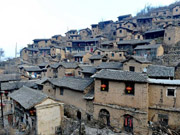 800-year-old ancient village in Shanxi
800-year-old ancient village in Shanxi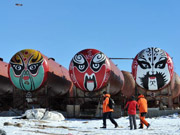 A glimpse of China's Zhongshan station in Antarctica
A glimpse of China's Zhongshan station in Antarctica Female marines receive tactical training in NW China
Female marines receive tactical training in NW China Shanghai women fall in love with Aerial Yoga
Shanghai women fall in love with Aerial Yoga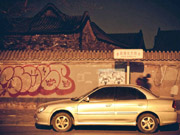 This is Beijing – Nanluoguxiang
This is Beijing – Nanluoguxiang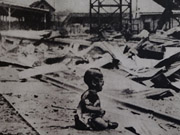 Old photos of Anti-Japanese War (1937-1945)
Old photos of Anti-Japanese War (1937-1945)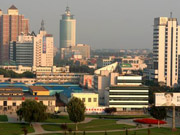 Top 10 cities for falling house prices in January
Top 10 cities for falling house prices in January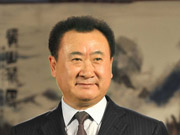 Top 10 richest real estate tycoons: Hurun
Top 10 richest real estate tycoons: Hurun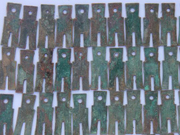 Large numbers of ancient coins excavated in Inner Mongolia
Large numbers of ancient coins excavated in Inner Mongolia British WWII veteran: I can't forgive Japan
British WWII veteran: I can't forgive Japan Top 10 brands that win rich women's hearts
Top 10 brands that win rich women's hearts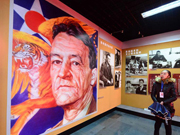 Memorizing the Flying Tigers
Memorizing the Flying Tigers The Chinese Dream: the Chinese Spirit and the Chinese Way
The Chinese Dream: the Chinese Spirit and the Chinese Way
Day|Week|Month